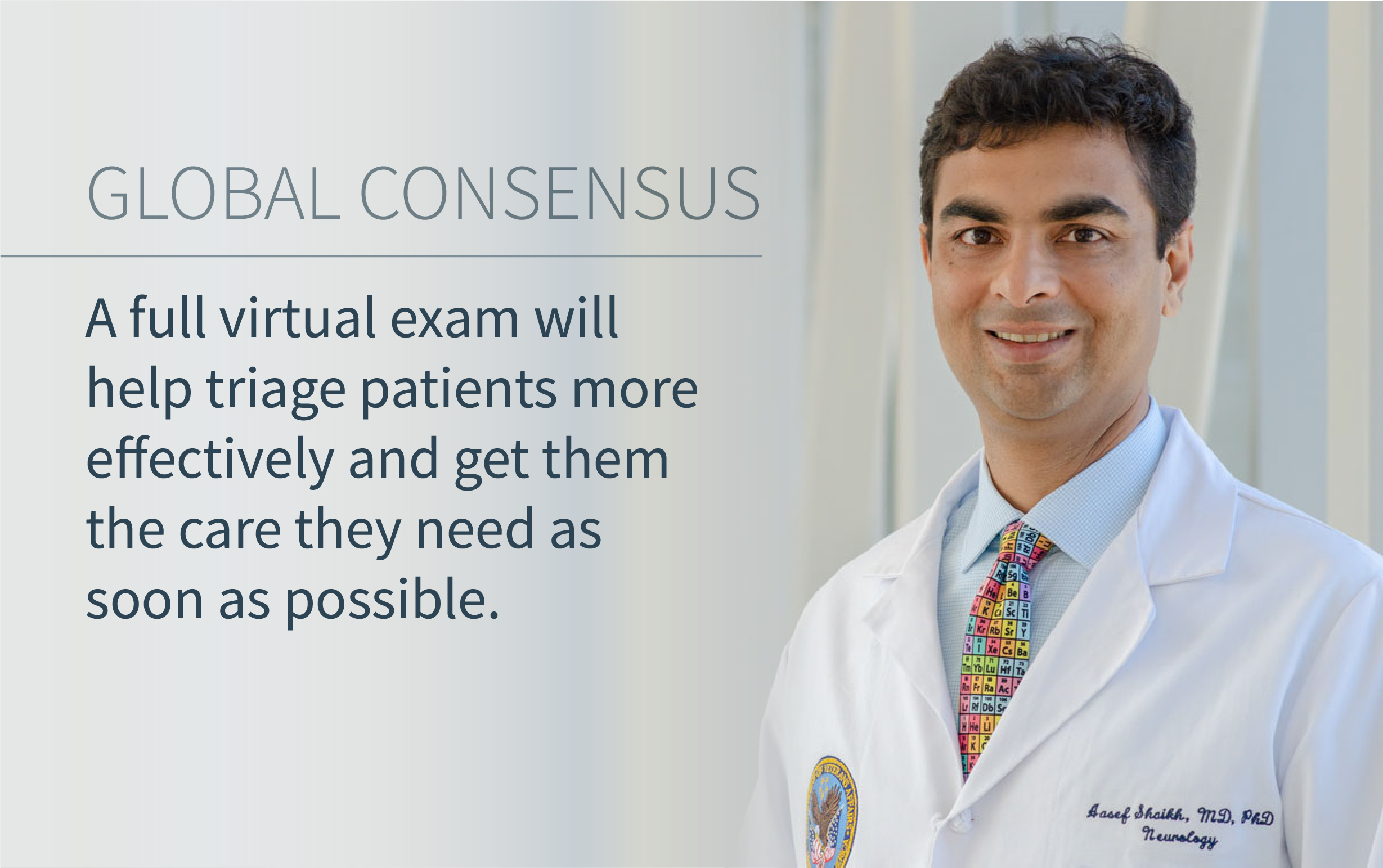Dizziness is a symptom that can be linked to a wide-range of conditions, from something relatively benign such as dehydration, a chronic problem such as anxiety, or with conditions as serious as a stroke or multiple sclerosis.
“About 15 percent of those visiting the emergency room have devastating neurological conditions such as stroke or multiple sclerosis that require urgent attention,” said Aasef Shaikh, MD, PhD, the Penni and Stephen Weinberg Chair in Brain Health at the University Hospitals Neurological Institute and a research scientist from the Cleveland Functional Electrical Stimulation (FES) Center at the Louis Stokes Cleveland VA Medical Center.
Dr. Shaikh recently led an international taskforce of experts to develop globally accepted, consensus-based guidelines to help emergency room doctors diagnose and triage patients with dizzy symptoms over a telehealth, virtual platform. This taskforce, consisting of two dozen expert physician-scientists from 10 countries, had its work endorsed and published by the International Society for Research in Cerebellum and Ataxias.
“There are very few doctors who have adequate experience to treat the complex problem of dizziness. As our world is going through the crisis in a contagious pandemic, the doctors were strained in triaging their patients with dizziness based on new priorities,” said Dr. Shaikh. “They had to determine which patients should be attended expeditiously and who could wait.”
The taskforce offered two important tips: (1) How to identify a patient who needs urgent evaluation, expedited evaluation, or one who could wait to be seen in clinic at a later date; and (2) How to evaluate a patient with dizziness using the virtual platform of telemedicine.
The guidelines were prepared in such a way that they become helpful for any healthcare provider working in the urgent care, emergency room, or general practice, said Dr. Shaikh.
Furthermore, the taskforce believes that telemedicine for patients with dizziness will resolve many logistic issues even after the COVID-19 crisis is over.
“There was an era before COVID-19, and there will be a different time after,” said Dr. Shaikh.
The taskforce also shared a word of caution. They believe, no matter how advanced healthcare systems become in using virtual ways to treat patients, the human interaction of the in-person consultation will continue to be an important component in the healing process.
“The future guidelines for telemedicine should be informed by evidence that weighs up the pros and cons personal versus telemedicine consultations. Whatever the coming years will bring, it seems clear that telemedicine has received an immediate boost to its uptake with major implications. This could mean a major paradigm shift in favor of for time- and resource-management in healthcare,” said Dr. Shaikh.
###
About University Hospitals
Founded in 1866, University Hospitals serves the needs of patients through an integrated network of 18 hospitals, more than 50 health centers and outpatient facilities, and 200 physician offices in 16 counties throughout northern Ohio. The system’s flagship academic medical center, University Hospitals Cleveland Medical Center, located in Cleveland’s University Circle, is affiliated with Case Western Reserve University School of Medicine. UH Cleveland Medical Center is perennially among the highest performers in national ranking surveys, including “America’s Best Hospitals” from U.S. News & World Report. Advancing the Science of Health and the Art of Compassion is UH’s vision for benefitting its patients into the future, and the organization’s unwavering mission is To Heal. To Teach. To Discover. Follow UH on LinkedIn, Facebook @UniversityHospitals and Twitter @UHhospitals. For more information, visit UHhospitals.org.
About Louis Stokes Cleveland VA Medical Center
The Cleveland VA Medical Center is the hub of VA Northeast Ohio Healthcare System, providing and coordinating primary, acute and specialty care. Focusing on treating the whole Veteran through health promotion and disease prevention, VA Northeast Ohio Healthcare System delivers comprehensive, seamless health care and social services for more than 112,000 Veterans at 18 locations across Northeast Ohio. VA Northeast Ohio Healthcare System contributes to the future of medicine through education, training and research programs. For more information visit www.cleveland.va.gov.
About Cleveland FES Center
The Cleveland FES Center is a consortium of the Louis Stokes Cleveland VA Medical Center, MetroHealth Medical Center, Case Western Reserve University, University Hospitals, and the Cleveland Clinic Neurological Institute. With their support, researchers, engineers and clinicians collaborate together to develop innovative solutions that improve the quality of life of individuals with neurological or other muscular skeletal impairments. Through the use of neurostimulation and neuromodulation research and applications, the Cleveland FES Center leads the translation of this technology into clinical deployment.


